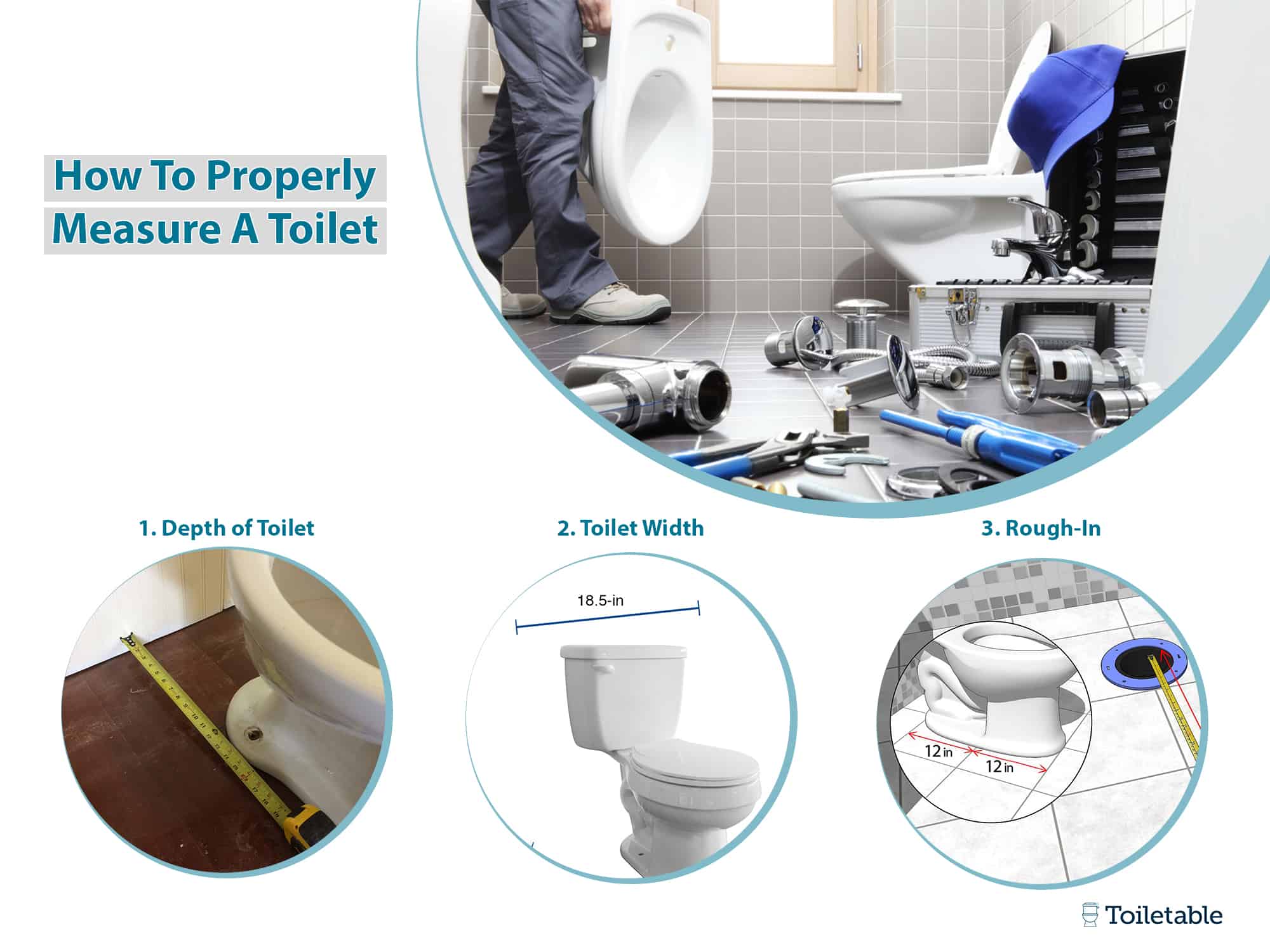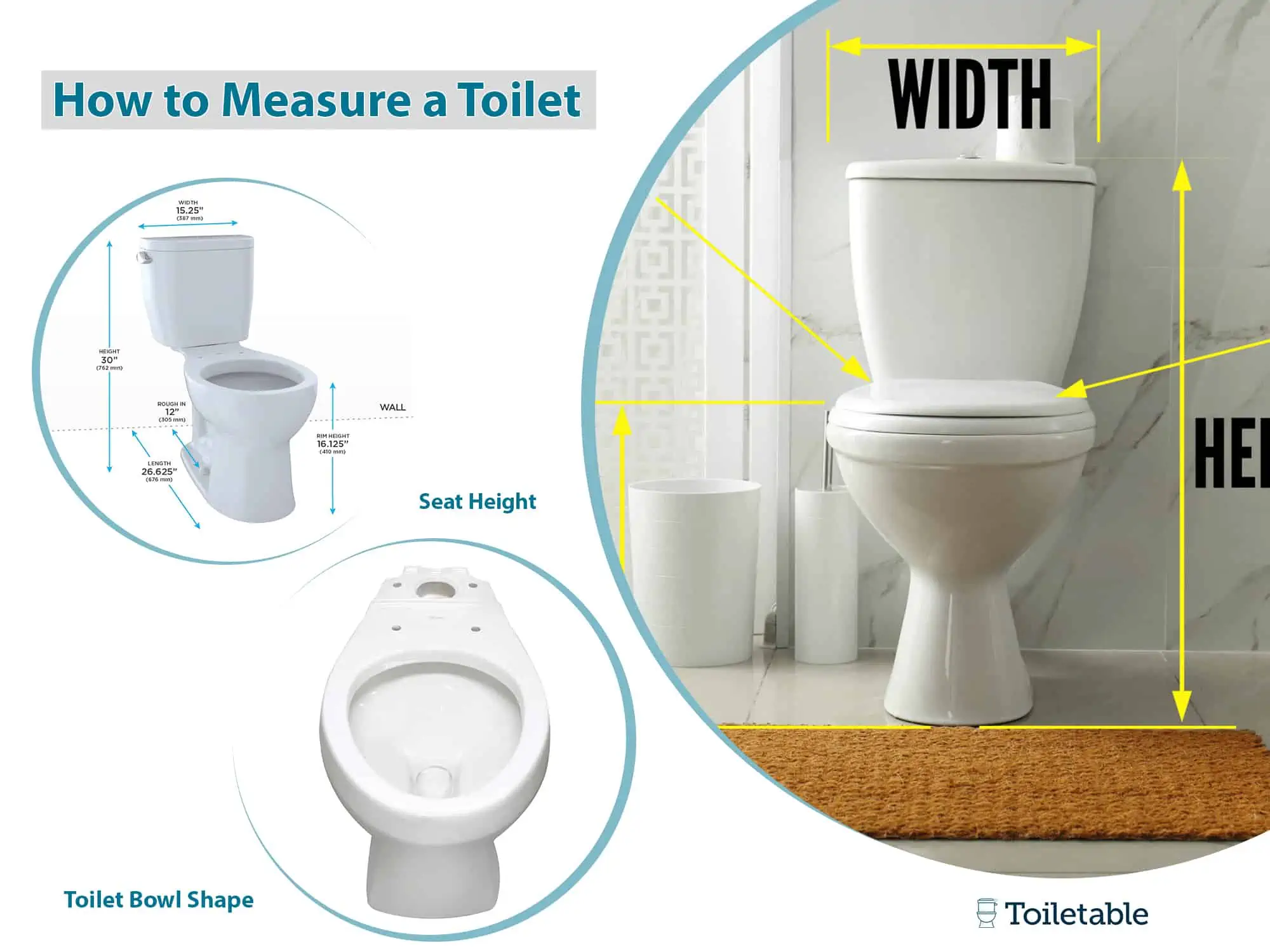You might not think about it every day, but toilets play a huge part in daily life. The porcelain throne offers performance, efficiency, and durability—but it has another important aspect that’s often overlooked….its dimensions.
Toilets come in all shapes and sizes, meaning measurement isn’t quite as straightforward as you might think. Whether you are buying a toilet for your new home or replacing an older model, making the correct purchase is important.
The two biggest factors to keep in mind while measuring your toilet seat are seat shape and height. While there are other important measurements to keep in mind, these two can have the biggest impact on a toilet’s comfort of use and fit into your bathroom. Measuring a toilet seat is way more than meets the eye! Our experts will guide you along this journey, teaching you everything you need to know about correctly measuring your toilet seat (and why it’s important).
Getting to Know the Toilet: Comfort Factors
Factor 1: Toilet Bowl Shape
With millions of models on the market, toilet bowls come in a huge variety. Most toilet bowls come in one of three shapes: round, elongated, and compact elongated. The shape you choose will play an essential role in your comfort.
Round toilet seats measure about 16.5 inches in length, making them a great, space-saving option. They’re perfect for anyone who gets their business done quickly and efficiently. If you are a petite person, round models may also suit your needs best.
Elongated toilet seats, which are pear-shaped and have a length of about 18.5 inches, have their perks, too. If you spend long stretches of time seated on the toilet, an elongated model may be your best bet. They’re also the most supportive option for those with mobility issues.
We detailed the differences between elongated vs. rounded bowls.
Prefer to meet in the middle? You can have the best of both worlds with a compact elongated option, which features an elongated design but takes up the same amount of space as a round toilet. This choice is both comfortable and space-efficient. It’s a favorite among our toilet experts, and we believe it would look and feel great in your household.
Pro Tip: Many stores that sell toilets have models you can sit on to test out. Take advantage of this to get a feel for comfort.
Factor 2: Toilet Height
Although it may seem trivial, toilet seat height is a key factor for evaluating a toilet’s comfort level. If you’re tall, you may find it uncomfortable to stoop down to a short toilet’s level to use the restroom. On the other hand, if you’re short, you may find your feet dangling when you sit on a toilet that’s too high. Both of these comfort issues can be eliminated by choosing the right height, so it’s important to pick a toilet that fits you.
Don’t overlook your physical needs when choosing a toilet height. While the standard height nowadays is from 14.5 to 16 inches, taller seat heights are available. If you’re 6 feet tall or taller, you should consider a right-height toilet seat (also called chair height or comfort height), which measures between 17 and 19 inches. Right-height seats are also ideal for the elderly and those with mobility issues, as they’re easier to sit down on and stand up from. If your new toilet will be used mainly by shorter individuals or children, it could be worth going for a model on the shorter side.
Read our detailed guide about toilet heights (comfort vs. standard height)
The world of toilets has changed a lot since the days of our parents. If you have never purchased a toilet of your own, it can be overwhelming. Buying a toilet should be the same process as purchasing a new mattress. Take a test drive! Visit the home appliance store and sit down on a model to get a feel for its comfort.
Pro Tip: When in doubt, go for a 17-inch model. This measurement is the most compatible for all body heights.
How to Properly Measure a Toilet
Size matters when it comes to choosing a toilet! So bring your tape measure along to your home appliance store and measure before you buy. Beyond determining comfort, a toilet’s size can also impact the look, feel, and space in your bathroom.
Pro Tip: Although you can certainly purchase a toilet online, we recommend heading out to the store and getting a feel for it in person.

Measuring a toilet is simple as long as you do it the right way. The rough-in measurement (the distance between the wall behind the toilet and the center of the toilet’s drain pipe) is one of the most important things to account for. Even if you find the perfect bowl and tank, if it doesn’t match your pre-existing rough-in, you may not be able to install it. We’ll discuss this measurement and everything else you need to know below.
Measurement 1: Toilet Length
Along with toilet width, toilet length is one of the measurements that determine your bowl shape. First, measure from the back of the toilet seat between the two bolt holes to the front of the seat. The minimum space to leave in front of a toilet is 21 inches, but the industry standard is 24 to 30 inches—this ensures you will have plenty of room to move freely around on the pot. It also allows enough clearance for your bathroom door.
A toilet’s length measurement combined with the proper clearance is important to consider when evaluating the space in your bathroom and your own comfort.
Measurement 2: Toilet Width
Another extremely important measurement is the toilet width. Find the width by measuring from the right edge to the left edge of your toilet seat. You’ll want to measure the widest portion of your toilet seat, which is usually across the middle.
Aim for about 30 inches of width space for your toilet, regardless of where you plan on putting it. If your toilet is wider than expected, it could run into nearby objects, or it may not fit in your bathroom at all. Be careful—although wider toilets can be comfy, one that’s too big may not fit well in your space.
Be sure to read our toilet seat measuring guide for more details
Measurement 3: Toilet Height
There are two things to consider when measuring a toilet’s height: tank height and bowl height.
Tank height is the total height of your toilet, which is especially important to know if you have a window or shelf above it. Simply measure from the floor to the top of the toilet tank for this measurement.
Bowl height is the distance from the floor to the top of your toilet seat, and it’s a key part of user comfort, particularly for tall people, the elderly, or those with mobility issues. Measure from the floor to the top of the toilet seat to obtain this measurement. To find the bowl height that’s right for you, measure from the ground to the middle of your knee. If the toilet bowl length is longer than this, your legs may dangle when sitting. Alternatively, if your measurement is taller than the toilet bowl height, you may find yourself in a deep squat while sitting on the porcelain throne.
Pro Tip: The healthiest way to go is in a slight squat. Aim for a toilet that puts you in this position for optimal comfort and health.
Measurement 4: Rough-In
As we mentioned before, the rough-in measurement is the most important dimension to keep in mind while buying a new toilet. If a toilet doesn’t match the rough-in you already have, you won’t be able to connect it to your existing pipes.
Most modern bathrooms have a 12-inch rough-in, but it is not unusual to come across a 14-inch or a 10-inch rough-in. Some toilets come with adjustable rough-in features. Above all, make sure whichever toilet you plan on installing will be compatible with your bathroom’s rough-in. There is nothing worse than picking out the perfect toilet and not being able to install it!
To measure the rough-in, measure the distance from the wall behind the toilet to the center of the bolts that hold the toilet to the floor. This usually aligns with the drainpipe.
Bottom Line
Buying a new toilet can seem complicated, as there are numerous factors you must consider. But with this helpful guide, planning for your new bathroom or upgrade can be an exciting process!
Aside from performance, comfort, and efficiency, the dimensions of your new toilet are also key factors to think about. Luckily, measuring can be quite simple—all you need is a tape measure. By keeping the details in this guide in mind, you’ll ensure your new toilet fits in with your bathroom and lifestyle, offering maximum comfort for all its users.
